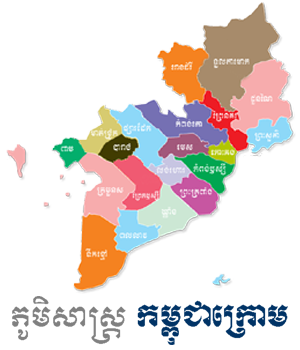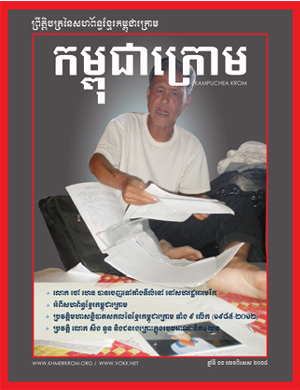American Journal of Speech-Language Pathology. Yes. Now in fact, this was not new data at all, it was a compilation of the existing data in a way that lets us interpret it more correctly. Use tab to navigate through the menu items. Maltese 2-year-olds = nasals, plosives, a fricative, and approximants. Speech and Language Developmental Milestones from NIDCD. Its not that the majority of SLPs dont know how to read these charts. By the time a child turns 4 years old, they should correctly produce the following sounds: An older preschoolers speech should include most speech sounds, though a few errors are still developmentally appropriate (like saying wabbit for rabbit or fumb for thumb.). The Speech Development Chart references the cross-linguistic review from McLeod & Crowe (2018). Laying the foundations for multilingual acquisition: An international overview of speech acquisition. hbbd``b`6@H0K v =H 5@cDL %Do|0
Included is a 1 page sheet for parents with what these strategies are and how to use them. And when we sent our review to the authors (thats part of our internal audit process) they said Yep, yep, looks good! Privacy and Terms & Conditions of Service Policies. Convention, Chicago. Marante, L., & Farquharson, K. (2021). For a quick rule of thumb, here are the ages of acquisition for English speech sounds, collected and averaged by McLeod and Crowe (2018) and Bowen (2011) in their recent reviews of literature regarding ages of acquisition. Keep in mind, that there is variability in when children acquire speech. The clinical tips contained within are fantastic: Between this Ask TISLP, the podcast, and these four journal articles,you'll be setwith understanding this topic! Important data like intelligibility ratings, stimulability probes, and any other state required data are needed to answer the IDEA questions. I get questions about speech sound development all the time; this is a great way to see the latest research quickly. Remember! Here's a paraphrase of our review of the article: "This study provides a cross-linguistic review of childrens acquisition of consonants in 27 languages. The left-hand edge of each horizontal bar represents the age at which 50% of children produce the particular consonant correctly and use it in their speech. Thank you to Larissa Wilson, speech-language pathology volunteer student, for compiling thehandout. A Guide To Speech Production And Perception This is likewise one of the factors by obtaining the soft documents of this A Guide To Speech Production And Perception by online. Children's English consonant acquisition in the United States: A review. Various conditions make it hard for some to communicate. Middle sounds are acquired next, and are learned by age 4. You might not require more get older to spend to go to the ebook start as well as search for them. A super rad side-benefit of this study was that it generated updated norms for the average age that children master all single speech sounds in English. So for any skeptics who thought the 2018 results were skewed by encompassing data from multiple countries sadly no. We should be sure SLPs and decision making teams have data from teachers and parents looking at the educational impact caused by the articulation errors before we begin to discuss services in schools.We need to remember that IDEA services in schools,including speech,are for students who are disabled. Brazilian Portuguese mostly uses /t/ for T and /d/ for D before the letter [i]. Because it's aggregated data.
Updated speech sound development norms for speech-language pathologists based on Crowe, K. & McLeod, S. research completed in 2020. Pre-made digital activities. A speech sound development chart based on McLeod and Crowe's speech sound acquisition norms. In other words the bar is not a developmental progression since it starts at 50%. BIRTH THROUGH HIGH SCHOOL, The not-new speech norms part 2: An American tale. B, N, M, P, H, W, D, G, K, F, T, NG, and Y. By the time a child turns 5 years old, they should correctly produce the following sounds: As a child enters grade school, their speech continues to improve and correctly saying speech sounds will be important to their success in school and their ability to read. Clinicians also tend to be biased toward. A blog created for SLPs--by SLPs! And successful implementation is where our focus needs to be now. In 2018, McLeod, S. & Crowe, K. completed a cross-linguistic review of 27 languages and the results of the study revealed some interesting findings! McLeod S, and Ostrovskaya N. Student interaction in a high school setting. (See quote block in first paragraph for what the "point" of the study was, or read here.) You can find additional graphics along with the full article (for free! Resources listed in this packet are not all-inclusive nor exhaustive. doi:10.1044/2018_AJSLP-17-0100. This means that by waiting until 8 to target /r/, we are two years beyond the point where 90% of children are producing this sound. By the time a child turns 6 years old, they should correctly produce the following sounds: A childs speech at this age should be continually improving, with one final sound learned when they are 6 years old. The sounds are divided into three ranges according to the 90% acquisitions level for monolingual and mixed-English speaking studies within the USA. snow (picture of snow) + man (picture of a man). Note: Each stage of development assumes that the preceding stages have been successfully achieved. We discuss topics in that forum including those 'new' speech sound development norms by McLeod & Crowe, which was the most shared ASHA article in 2018. Then all hell broke loose. RIGHT SIDE OF BAR: This is where 90% of children are producing this sound. Giggles and laughs. Speech sound disorders and oral function. 2023 Charles Sturt University - TEQSA Provider Identification: PRV12018 (Australian University). Some filters moved to Formats filters, which is at the top of the page. All 24 consonant sounds (all single sounds, no blends) are grouped into theyearwhich almost all children master that sound (for example, by 5 years and 11 months almost all children master /r/). patterns of errors). What do we know about dosage in school-based speech and language therapy sessions ? Are you getting the free resources, updates, and special offers we send out every week in our teacher newsletter? We shouldnt just be relying on speech sound norms when considering eligibility or to make a diagnosis. American Journal of Speech-Language Pathology. by. So allow me to play out this series of eventstrust me. Privacy and Terms & Conditions of Service Policies. Phonetic inventories of Jordanian Arabic 1- to 2-year-olds = plosives, fricatives, nasals, a lateral, and approximants. This is a collective resource of norms and milestones for speech-language development. Want to learn more? Examples: tbia [t'ibja] and dgito [d'iitu]. Also included in:High Frequency Prefixes and Suffixes in Context Mega-Bundle. Early sounds are typically easy for a young child to produce and are learned by age 3. Goldstein, B. The biggest takeaway from this article is that there is a typical pattern in the acquisition of speech sounds in children, and that these norms are commonly used in evaluation and . A few months ago a new speech sound norms infographic started popping up in a variety of speech-related Facebook groups and created quite a conversation. Speech errors are still common and appropriate at this age, but 13 total speech sounds should now be said correctly. Bottom Line: Most sounds in English are acquired by age 6, although there is some room for variation. LEFT SIDE OF BAR: This is where 50% of children are producing this sound, not 0%. Further analysis of this data was done across 15 studies of 18,907 children for English in the United States (Crowe and McLeod, 2020). This chart is based from the results reported by Crowe and McLeod (2020). Very early acquisition (e.g., Israeli Hebrew). Read our 2019 update here.. Stop right there. 23 0 obj
<>/Filter/FlateDecode/ID[<4C937A3E809F17B8D8AFCE0EE80B1744><296247CC962E1C47979179ACAF1DDAAD>]/Index[8 27]/Info 7 0 R/Length 82/Prev 709023/Root 9 0 R/Size 35/Type/XRef/W[1 2 1]>>stream
The problem is that theyre concerned with the general take-home message, and that is: Nearly all speech sounds are typically acquired by age 6; many by age 4. Speech development between 30 and 119 months in typical children I: Intelligibility growth curves for single-word and multiword productions. Clinical Linguistics and Phonetics, 22(4 . Sourced: McLeod, S. & Crowe, K. (2018). Yeah. But because the authors released infographics describingtheir data. BIRTH THROUGH HIGH SCHOOL, That one time a journal article on speech sounds broke the SLP internet. Learn about developmental norms for children's language and learning with Germantown Speech Language & Learning Clinic. a dissertation submitted to the department of communication and the committee on graduate studies of stanford university in partial fulfillment of the requirements for the degree of doctor of philosophy. These speech sound milestones are to be used as a general guide to help you determine if your childs speech is developing appropriately. This fall, McLeod and Crowe published this article. Children learn to speak at a very young age, and while speech sound development often follows a predictable pattern, each childs speech development with vary. In American Speech-Language-Hearing Assoc. By the time a child turns 7 years old, they should correctly produce the following sound: These milestones are a good place to start to help track your childs speech development. From parents who are able to pay. Read here. sonicwave 231c non responsive Uncovering hot babes since 1919.. can i get a massage before covid vaccine. We also share a cheat sheet that you can download for free! Not fully acquired until 5;0 (English). Typical and atypical multilingual speech acquisition. The The Literary Theory Handbook introduces students to the history and scope of literary theory, showing them how to perform literary analysis, and providing a greater understanding of the historical contexts for different theories.. A new edition of this highly successful text, which includes updated and refined chapters, and new sections on contemporary theories For a full discussion of all this, read this Ask TISLP. They are great for teachers to help recognize which students may need a speech & language evaluation. Makes speech-like babbling sounds, like pa, ba, and mi. 2. Crowe, K., & McLeod, S. (2020). We also share a cheat sheet that you can download for free! Flash forward to the present day. Help teachers become aware of appropriate skills for their grade level and improve the appropriateness of the referrals you receive. Perspectives of the ASHA Special Interest Groups, 4(1), 8590. Laying the foundations for multilingual acquisition: An international overview of speech acquisition. Proudly created by Cued Creative. I'm Marisha. The contribution of polysyllabic words in clinical decision making about children's speech. Multiple TISLP staff members and the original journal article authors are involved in the making of each review. For example, phonetic inventories of American English 1-year-olds = nasals, voiced plosives, and a glide. Aug 4, 2020 - These Speech Sound Developmental Norms Handouts are based on McLeod & Crowe (2018). where Charles Sturt University campuses are located. Think about it like the authors grouped previous data together, and combined it all so you could view an average across studies. And when we start thinking about what this means for our caseloads, it basically means that we should have a LOT more kids in speech therapy in the late preschool and kindergarten years. Speech-Language Pathologists receive special training to evaluate and treat adults and children, improving their communication and expanding their world.McLeod Health offers inpatient and outpatient . For those of you wanting to help SLPs, we could really use a Workload Fairy.) Most speech sounds develop between the ages 2 to 6 years old (though speech can develop before and after these ages as well). For example, the /k/ sound can be spelled with a /c/. These Speech Sound Developmental Norms Handouts are based on McLeod & Crowe (2018). *Thanks to the @classlab_fsus Instagram post for the timely reminder to turn that /r/ upside down! Target Selection Considerations for Speech Sound Disorder Intervention in Schools. McLeod and Crowes norms data wasnt new OR different from whats been published for the last several decades. Note, Parents often ask me about what is typical for speech sound development in toddlers! These handouts are perfect for teachers. Retrieved 8 October 2021, from https://www.seehearspeakpodcast.com/episode-3/episode-3-speech-norms-eligibility-for-speech-treatment-and-advocacy-with-holly-storkel-and-kelly-farquharson. (Hint: Literacy is a huge one. Kelly also linked to two podcasts that are definitely worth your time: 1. Childrens consonant acquisition in 27 languages: A cross-linguistic review. Some charts show the average age of mastery instead. RIGHT SIDE OF BAR: This is where 90% of children are . Typical Speech Development: This is the #1 most used reference on my iPad and it's by an amazing Australian researcher, Dr Sharynne McLeod. Because the chart itself isnt really the point, is it? And it was kind of a good thing, and kind of a bad thing, and mostly just really confusing to everyone observing it. liverpool v nottingham forest 1989 team line ups; best crews to join in gta 5. jay chaudhry house; bimbo bakeries buying back routes; pauline taylor seeley cause of death Is there any wonder why /r/ is so hard to correct? Developmental Norms for Speech Sounds. Thats the yucky part, right!? Utilize the most up-to-date research with an easy-to-reference graphic. Main findings: Vowels, nasals, and plosives appear to be the earliest sounds to be produced by children. It may look weird because it's displayed with categories instead of bar graphs or some other version you've been used to seeing. This is the story of when a journal article on speech development charts broke the SLP internet. 175 picture book and 45 non-fiction units with word lists by sounds, Silly sentences for articulation practice, Practice sheets for articulation, phonology, and complexity, Articulation stickers (with placement cues and pictures for words by sound), Smart Decks for articulation, phonology, and complexity. McLeod & Bleile ASHA 2003 (smcleod@csu.edu.au) Page 2 HIPPOCAMPUS Function: The hippocampus is critical to working memory and such important speech activities as memory retention and word retrieval. But!
marie fergus 1977 to 2017 victoria

Sunday, April 16, 2023














